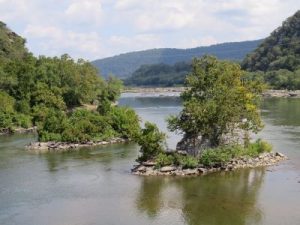 For most anglers, drop offs, channel edges and other underwater structures are among the most important areas for targeting fish.
For most anglers, drop offs, channel edges and other underwater structures are among the most important areas for targeting fish.
Types of structure:
Channel edges are the most common areas where depths vary. These drops often hold fish, especially during specific conditions.
In reservoirs, rock walls sometimes occur, some of which are nearly vertical. These structures can act to divert water flows, which in turn attracts fish.
In many lakes and rivers, natural rock outcrops occur, either submerged or breaking the surface. These formations can be dangerous to boaters but can hold good numbers of fish.
Manmade structures such as sea walls, bulkheads, wrecks, reefs, and even boats can attract fish.
Border Habitats
Often, channels and other drop offs are bordered by mud flats, sandbars or other shallow areas. These areas serve as refuges for baitfish and other forage sources.
Spadderdock, also known as water lily, cow lily, or yellow pond lily, is often found along the edges of drop offs. Spatterdock plants grow in freshwater beds, with roots embedded in the bottom and leaves floating on the water’s surface.
In some areas, deep sections are bordered by shallow areas of stones, aggregate or other debris. While the nearby shallows may be difficult to fish due to obstructions, these nearby deep pools or channels can be worth fishing.
Water Flows
Drop offs are subject to a variety of water movements. In many cases, water moves to or from shallower areas nearby. These water flows can be caused by temperature, wind, downstream currents, tidal movements, upwellings, spring flows, or other factors.
When fishing drop offs, it can be worthwhile to take notice of subtle hints concerning water flow. Is the wind coming off a sandbar, blowing the water directly into the channel? What about upwellings? Are their visible changes in color or noticeable changes in temperature along the drop?
Working these structures in pairs can sometimes be productive, with one angler focusing on deeper areas while a partner casts towards the flats. Usually, through experimentation, a pattern of fish behavior can be found. In some cases fish may behave in a similar manner for extended period. In other cases, fish may move in reaction to changing water temperatures, current flows or other factors.
Related Information